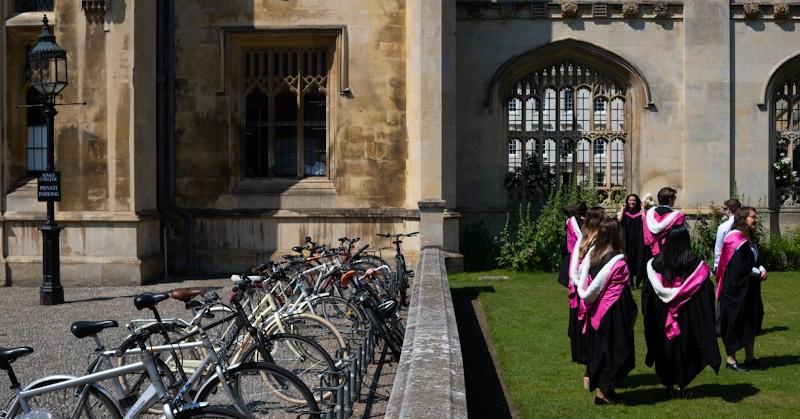Embarking on the transformative journey towards securing a Master of Business Administration (MBA) degree is an ambitious pursuit that promises both challenges and rewards. Aspiring MBA candidates, driven by the desire to elevate their careers and expand their horizons, are invariably met with a formidable obstacle: the specter of rejection, often colloquially referred to as the “MBA ding.” In this comprehensive exploration, we delve into an extensive array of strategies meticulously crafted to empower applicants in navigating this challenging landscape successfully, with the ultimate goal of fortifying their applications to an unprecedented level of sophistication and persuasiveness.
Understanding the MBA Ding
The first step in overcoming any challenge is understanding it. The term “MBA ding” refers to the rejection of an applicant’s MBA application. This rejection can stem from various factors, including a competitive applicant pool, weaknesses in the application, or misalignment with the values and goals of the particular MBA program.
The Competitive Landscape
Delving into the nuances of the MBA ding reveals a highly competitive environment, where top-tier business schools face an overwhelming number of exceptional applicants. The sheer volume of qualified candidates intensifies the selectivity of admissions, leading to rejection for even highly accomplished individuals.
Components of Strength
The strength of an MBA application lies in a delicate balance of academic records, standardized test scores, letters of recommendation, and the applicant’s resume and essays. Weaknesses in any of these elements contribute to the MBA ding, as admissions committees seek holistic profiles that showcase not only academic prowess but also a well-rounded set of skills and experiences.
The Importance of Fit
Beyond individual achievements, the rejection may stem from a lack of alignment with the values and goals of the MBA program. Admissions committees prioritize candidates who can contribute meaningfully to the school’s community and thrive within its unique culture. A rejection, in this context, underscores the significance of conveying a clear alignment between the applicant’s aspirations and the program’s ethos.
In understanding the MBA through these lenses, applicants can navigate the complexities of the admissions process, fostering self-reflection and improvement for future success.
Building a Robust Application
To navigate the MBA ding challenge, prospective students must focus on constructing a comprehensive and compelling application. This involves meticulous attention to every aspect, from academic achievements and professional experiences to extracurricular activities and personal statements. Emphasizing unique qualities, achievements, and goals can set an applicant apart in the competitive landscape of MBA admissions.
Strategic Self-Assessment
Before submitting an application, candidates should engage in a strategic self-assessment. Reflecting on personal and professional experiences, strengths, and weaknesses can provide valuable insights. Understanding one’s unique value proposition and addressing potential weaknesses allows applicants to proactively mitigate concerns that might contribute to the dreaded MBA ding.
Effective Networking and Recommendations
Building a strong network within the chosen industry and obtaining compelling letters of recommendation are integral components of successful MBA applications. Engaging with professionals, alumni, and current students in the desired program can provide valuable insights and endorsements. Strong letters of recommendation that attest to an applicant’s skills, character, and potential can significantly enhance the overall application.
Crafting a Compelling Personal Statement
The personal statement is a crucial element in MBA applications. It is an opportunity for applicants to showcase their personality, motivations, and alignment with the program’s values. Effectively communicating one’s passion for business, career goals, and the specific attributes that make them an ideal candidate can leave a lasting impression on admissions committees, reducing the likelihood of encountering the MBA ding.
Mock Interviews and Professional Guidance
Preparing for MBA interviews is a critical aspect of the application process. Mock interviews, either with mentors, professionals in the field, or admissions consultants, can help candidates refine their responses, improve communication skills, and project confidence. Seeking professional guidance from admissions consultants can provide valuable insights into the expectations of specific MBA programs and increase the likelihood of acceptance.
Turning Setbacks into Opportunities
Facing the MBA does not signify the end of the road. Many successful professionals and business leaders have encountered rejection before achieving their MBA goals. It’s crucial for applicants to view setbacks as opportunities for growth, self-reflection, and improvement. Analyzing feedback from rejection letters, if provided, and addressing identified weaknesses can significantly strengthen subsequent applications.
Conclusion
Successfully navigating the MBA ding challenge requires a combination of strategic planning, self-reflection, and resilience. By building a robust application, strategically assessing personal strengths and weaknesses, and seeking professional guidance, aspiring MBA candidates can enhance their chances of acceptance. Remember, the MBA admissions process is not solely about avoiding rejection but about presenting oneself authentically and demonstrating the potential to thrive in a rigorous academic and professional environment. With these strategies in place, applicants can confidently navigate the MBA admissions journey and turn the challenge of the MBA ding into an opportunity for personal and professional growth.

